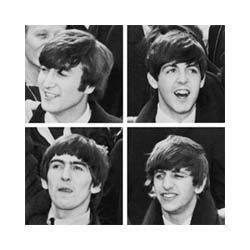
Reply by phat
I’m sorry if I came off as hostile and mean, that wasn’t what I was trying to do.
Having said that… Has anyone here really tried to mix something trying to get away from the stereo as stage image idea? It’s something I’ve been obsessed with since I noticed that a huge chunk of the song disappeared when I disconnected one speaker when listening to Revolver.
PS – I hadn’t ever really thought of Paul as a backup singer in those terms. I might have to agree with you.
Reply by lory
“Revolver” was originally recorded in stereo. I don’t believe anyone who points out the bizarre panning on Beatles albums is talking about Beatles albums that were intended to be stereo recordings. It’s the older ones reconstituted from mono.
I would also consider it sacreligious to rag on anything done by George Martin, but these stereo aberrations were done by someone at a record company, not George Martin (I have to believe). In fact, I would pay good money to buy a drum sample CD called Abbey Road that has the sounds of the kit George produced for “Come Together” and also sounds like the kit on all the Badfinger records.
Reply by steve
I finally got around to picking up “Anthology 3” a few weeks ago. While everyone talks about their creative use of production techniques, I feel that these “outtakes” and alternate versions makes all of the studio tricks seem almost a waste of time. What the Anthology Series shows more than anything is that the Beatles were an amazing live band, and that a good band usually sounds at its best when it is playing together live, even just “live in the studio.”
Many of the most impressive moments on this CD set are live run-throughs of songs complete with live “scratch” vocals that sound just great. This was a band that hadn’t played a live gig in years but they still recorded like a band. Reading through the CD notes and the “Beatles Recording Sessions” book, Lennon wouldn’t lay down an acoustic guitar track and then come back and start trying to nail a vocal take. He would sing and play together (to tape!) until he got an overall performance that was up to their sky-high standards.
This was a band that made good use studio technology; but they never stopped playing and recording like a band. Even on songs with countless overdubs, the basic tracks often included the entire band playing live to tape, and the recorded performances are good proof of how important that is. Just say NO to building songs one track at a time!
Reply by nightshade
“I’ve grown tired of the ‘stereo as stage image’ garbage. And I kind of wish everyone else would too.”
I’m obsessive about that approach when doing a realistic purist recording, where the instruments really are all set up like that in the room, and recorded in stereo. Often that is the background for whatever overdubs come (usually not many), and I can fit them in quasi-realistically or in surreal contrast as seems appropriate.
However I agree it’s kind of weak to try to get there with panned mono tracks. Many mic’d drum tracks constructed that way are far from convincing, especially by the time some reverb on the snare puts it in another distant room than the rest of the kit.
